After discovering many wonderful things to do in Hanoi, we head to the Imperial city of Hue. Hue, a city in central Vietnam, is renowned for its rich history and cultural heritage. Once the imperial capital of the Nguyen Dynasty, Hue is home to the stunning Imperial City, a UNESCO World Heritage Site featuring palaces, temples and ancient tombs. The city is situated along the Perfume River, offering picturesque landscapes and a serene vibe.
Just before midday, the heat presses down like a hot wet towel, especially after climbing the many steps to the Thien Mu Pagoda. I got here by ‘dragon boat’, from Hue (4km away). The cool breeze rising from the Perfume River carries the scent of hundreds of frangipani and jasmine trees lining the banks. Our very handsome dragon has gold scales, blue-green crests and red light bulbs for eyes. Giant pink lotus flowers float on the river, part of an artistic installation of floating lanterns lit up at night. It was a cool ride and the best way to get to – not only this magnificent Buddhist pagoda originally built in 1601- but the Royal Tombs as well. These are the best things to do in Hue.
Contents
- Hue, Vietnam
- 19 Things To Do In Hue
- 4- Visit The Tomb of Khai Dinh
- 5- Step Back In History At The Tomb of Tu Duc
- 6- Admire The Architecture At The Tomb of Minh Mang
- 7- Visit The Hue Museum of Royal Antiquities
- 8- Take A Perfume River Cruise
- 9- Shop At Dong Ba Market
- 10- Explore The Hue Museum of Royal Fine Arts
- 11- See Hue’s Bridges
- 12- Explore An Dinh Palace
- 13- Go Hiking At Bach Ma National Park
- 14- Wander Through The Hue Royal Antiquities Museum
- 15- Discover The Tranquility Of Hue’s Traditional Garden Houses (Nha Vuon)
- 16- Discover the Craft Villages in Hue
- 17- Relax On Thuan An Beach
- 18- Hue Night Market
- 19- Enjoy The View From Vong Canh Hill
- 20- Admire The Architecture Of Phu Cam Cathedral
Hue, Vietnam
Discover the enchanting beauty of Vietnam without the hassle of planning! If you’re short on time or just don’t feel like diving into the detail, a professionally organised tour is the perfect solution. Immerse yourself in the rich culture, stunning landscapes and vibrant cities of Vietnam with expert guides who will take care of everything. From the bustling streets of Hanoi to the serene waters of Ha Long Bay, let Luxury Escapes create an unforgettable experience for you. Find out how to have a hassle-free adventure in Vietnam today while exploring this incredible country in comfort.
19 Things To Do In Hue
1- See the Monks at Thien Mu Pagoda
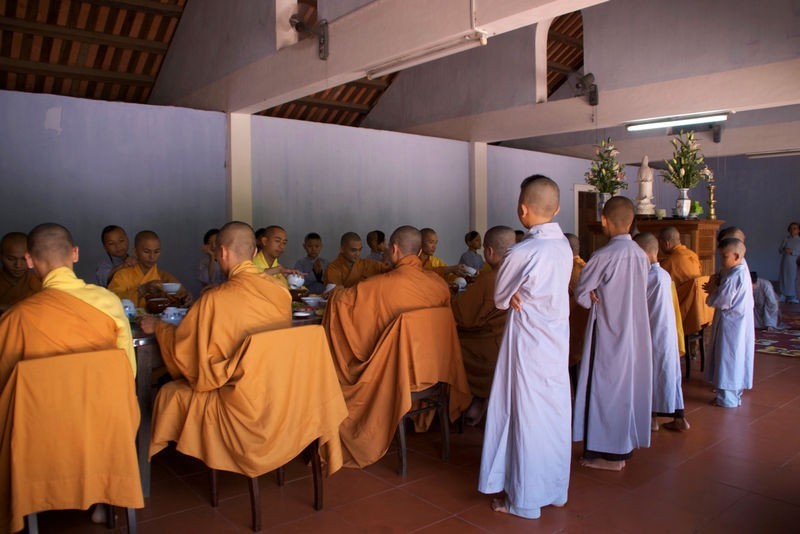
Not only is the Thien Mu Pagoda a famous landmark in Vietnam, visiting the pagoda and tombs are two of the most popular things to do in Hue.
Perched on the banks of the Perfume River, this seven-story pagoda is the tallest religious building in Vietnam and has become an enduring symbol of the city.
The pagoda’s peaceful gardens, historical statues, and the iconic octagonal tower, Phuoc Duyen, provide an atmosphere of serene contemplation.
Don’t miss the opportunity to see the blue Austin car on display, which transported a monk to Saigon in 1963 for a protest that changed the course of history.
Venturing to the back gardens of the Thien Mu Pagoda, I spot a young novice monk emptying a giant kettle onto a Bougainvillea laden with blossoms.
Alongside manicured gardens with dozens of bonsai trees in pots, run avenues leading to more buildings and groves of jackfruit trees.
Following the novice, with the kettle, I find an open-sided pavilion where teenage novices are busy setting up a long table in a lavender room where fans whir softly in the heat.
The table is set for about twenty fully-fledged monks not present yet.
There is an earthenware bowl for each with a neatly folded hand-towel on top and a china bowl by its side.
Serving bowls go in the middle.
A head novice in brown robes looks over the procedures and corrects the settings’ alignment the way a Silver Service butler would, instructing the younger ones in grey outfits.
When the table is ready, the senior monks in yellow robes file in, stand behind their chairs, say a prayer and finally sit-down as a flurry of steaming bowls arrive from the kitchen and the giant tea kettle does its rounds.
While the senior monks eat, the young boys in grey stand behind ready to fetch more water or assist in any way instructed.
The precision is military and the boys engaging but what is most extraordinary is the young boys’ hairstyles, a monastic version of chic punk.
As it pays to enquire when you see something you don’t understand, I ask my guide why the strange tufts of long hair left on otherwise shaven heads.
The answer is irrefutably pragmatic.
As a novice enters the monastery, his head is shaven except for three well-delineated areas (top-front and sides) representing the three jewels of the Buddhist faith: the Buddha, the teachings and the monks.
As novices pass their demanding exams, one side tuft is shaven off. After the next successful exam, the other side goes.
The top bunch stays till the finals are passed.
Because the process might take a long time, the hair grows quite long and, if the novice takes a few goes to pass, the hair gets longer. This is a nifty way to identify who’s who in the ladder.
Some boys hook their shoulder-length ribbon of hair behind their ear for practical purposes.
This practice, I am told, is unique to Vietnam.
2- Explore The Forbidden City
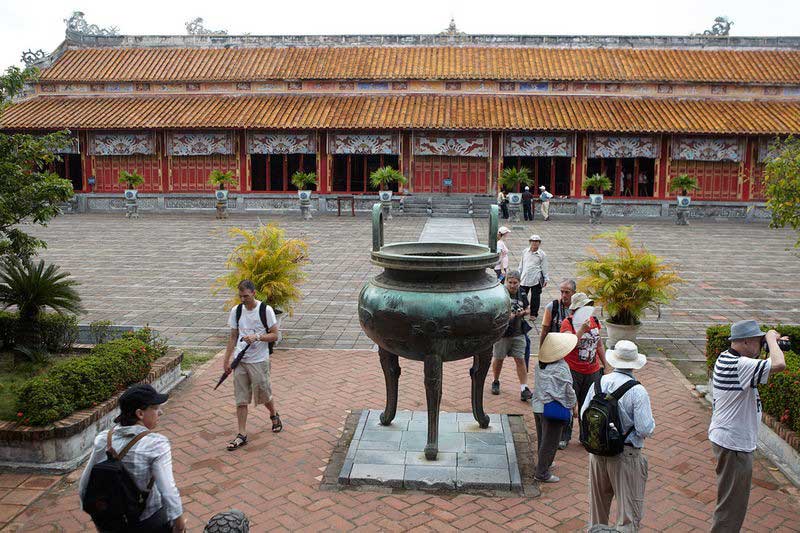
Hue, the ancient capital of Vietnam, has managed to maintain a slow and charming pace despite the number of travellers that have recently ‘discovered’ it.
The Forbidden City in Hue, also known as the Imperial City, is a UNESCO World Heritage Site and was the political and cultural heart of the Nguyen Dynasty.
Enclosed within thick walls and a moat, this vast complex housed the emperor, his family and court officials. It features palaces, temples, gardens, and pavilions, showcasing traditional Vietnamese architecture and artistry.
Despite damage during wars, the site remains a symbol of Vietnam’s imperial history and cultural heritage.
During the biennial Festival of Hue – which takes place on even-numbered years, visitors from Saigon and Hanoi pour in.
The Forbidden City (the Hue Citadel) comes alive with actors in period costumes going about as if they were courtiers carrying on with their daily lives bringing the otherwise empty pavilions with red lacquered columns and highly decorated ceilings, alive.
On the grounds, delegations from everywhere in the world perform for the crowds that file past continuously.
The grand finale is always worth attending if you can get in, but the main attractions are always the art installations, the shows and the exhibitions, and, more than any other, the boat races that take place on the river.
The banks are lined with families.
Ice cream, coconut and sugar cane juice vendors provide some coolness to the show.
Long traditional boats are moored against tall grass with families perched on the prows to watch and cheer for their favourite teams.
This is a photographers’ paradise.
3- Dine on Hue Royal Cuisine
Hue has a special Royal cuisine that delights with its freshness and dazzles with its elaborate presentation.
Dinner at Y Thao Garden (3 Thach Han St, Hue), is a must.
Try to get there just before sunset, as it is then that the exotic garden begins to twinkle with little lights strategically placed.
Heavenly, Vietnamese food is served in different rooms of the traditional house, or in the verandah.
4- Visit The Tomb of Khai Dinh
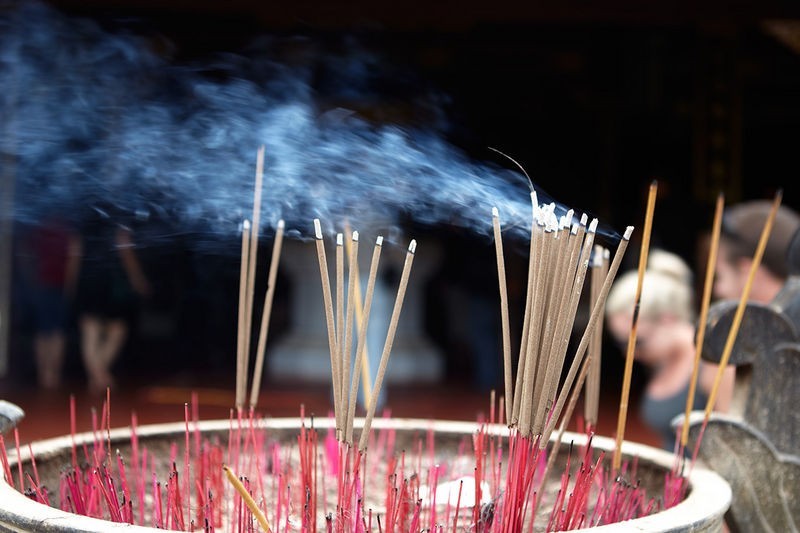
Admire the elaborate and ornate mausoleum of Emperor Khai Dinh, who ruled Vietnam from 1916 until his death in 1925.
His reign marked a period of significant change and modernization, as he introduced various reforms and adopted many Western customs.
His tomb, completed in 1931, serves as a testament to his influence and the blending of Eastern and Western architectural styles that characterised his reign.
This architectural marvel took 11 years to complete and features intricately detailed interiors, including splendid mosaics crafted from glass and porcelain.
The tomb’s hillside location provides stunning views of the surrounding landscape, making it not only a historical wonder but also a spot for breathtaking photography.
Visiting the Tomb of Khai Dinh allows you to step back in time and appreciate the artistic and cultural convergence that defines Hue’s historical legacy.
5- Step Back In History At The Tomb of Tu Duc
Wander through the picturesque grounds of Emperor Tu Duc’s tomb.
Surrounded by lush gardens and serene lakes, this tomb offers a peaceful retreat and a glimpse into the life of one of Vietnam’s longest-reigning emperors.
Tu Duc ruled Vietnam from 1848 to 1883, a period marked by both internal strife and increasing foreign pressure.
Despite the challenges of his reign, he is remembered for his contributions to Vietnamese culture and his devotion to Confucian principles.
His tomb, completed in 1867, exemplifies the traditional Nguyen Dynasty architecture and is a testament to his refined aesthetic sensibilities.
The site is an expansive complex featuring a pavilion where the emperor composed poetry, a theatre for royal performances, and a small lake with a tiny island, all designed to create a harmonious environment for reflection and relaxation.
Walking through this serene site, visitors can truly appreciate the tranquil beauty and historical significance of this imperial retreat.
6- Admire The Architecture At The Tomb of Minh Mang
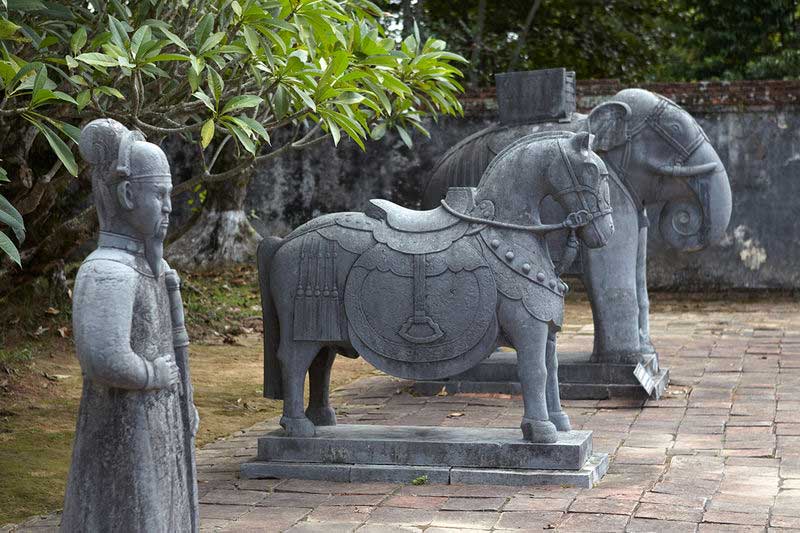
Discover the serene and well-preserved tomb of Emperor Minh Mang.
Known for its harmonious layout and beautiful landscaping, this tomb is a testament to Minh Mang’s vision and the artistry of the Nguyen Dynasty.
Emperor Minh Mang ruled Vietnam from 1820 to 1841. His reign is often praised for consolidating the Nguyen Dynasty, implementing administrative reforms, and promoting Confucianism.
The tomb, completed in 1843, is an architectural masterpiece that seamlessly blends natural and constructed elements.
Set in a stunning forested area, the tomb’s grounds include lakes, gardens, and numerous pavilions, all meticulously designed to reflect a balance between nature and human ingenuity.
The main mausoleum structure is aligned with Minh Mang’s philosophical and spiritual beliefs, emphasising the importance of harmony and order.
Visitors exploring this tranquil site will find themselves immersed in both the natural beauty and historical grandeur of Hue’s imperial legacy.
7- Visit The Hue Museum of Royal Antiquities
Delve into the rich history of Hue at the Hue Museum of Royal Antiquities.
This museum, located near the Imperial City, houses a vast collection of artefacts from the Nguyen Dynasty, including royal costumes, porcelain, and ceremonial items.
The exhibits offer a comprehensive overview of the cultural and artistic achievements of the dynasty.
The museum itself, set in a historic building, adds to the aura of the collection, providing visitors with an immersive experience that highlights Hue’s regal past.
8- Take A Perfume River Cruise
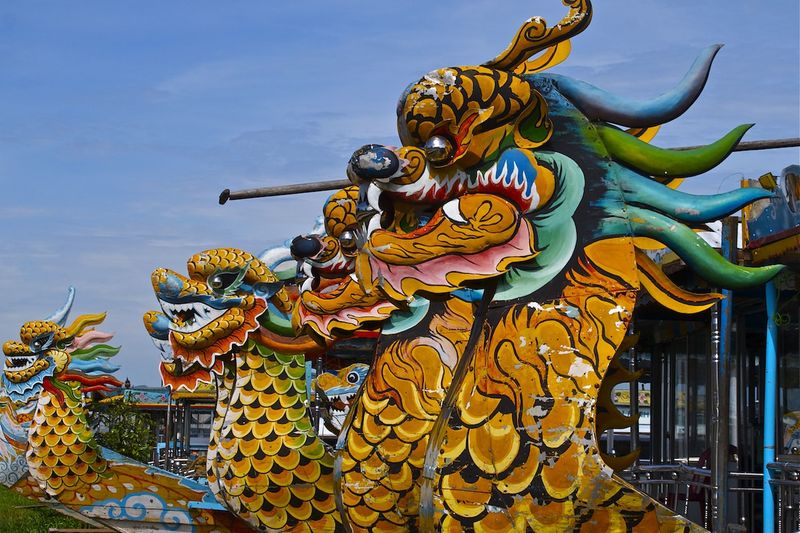
Take a relaxing boat trip along the scenic Perfume River.
This river is the lifeblood of Hue, and a cruise offers stunning views of the city’s historical monuments and natural landscapes.
The Perfume River, known locally as the Huong River, is a quintessential feature of Hue’s landscape and culture.
Originating from the Truong Son Mountains, it meanders gracefully through the city, offering residents and visitors alike picturesque views and a relaxing atmosphere.
The river got its name from the flowers that fall into the water from orchards upriver, which carry a fragrance that scents the air, particularly in autumn.
Historically, this river has been an important transportation route, as well as a source of inspiration for poets, musicians and artists.
Many of Hue’s most significant landmarks, including the Thien Mu Pagoda and various imperial tombs, are situated along its banks.
The serene waters and scenic surroundings make the Perfume River a perfect spot for leisurely boat trips, where travellers can enjoy the gentle flow of the river, observe traditional daily life along its shores, and take in the majestic landscapes that embody the spirit of Hue.
As you glide along this historic waterway, you’ll find that the Perfume River is not just a geographical feature but a living part of Hue’s cultural identity, weaving together the past and present in a beautiful tapestry.
9- Shop At Dong Ba Market
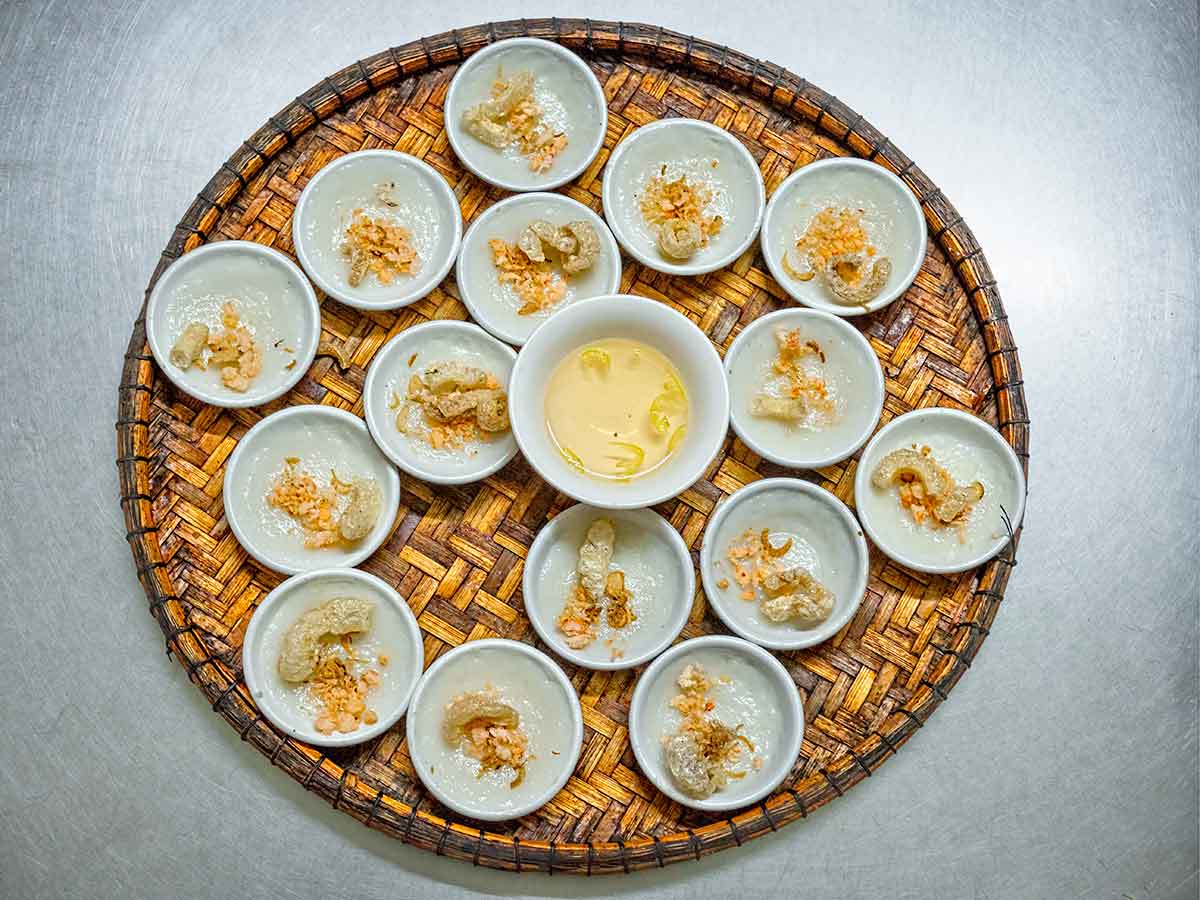
Shop for local goods and souvenirs at Hue’s largest market.
From fresh produce to handcrafted items, Dong Ba Market is the perfect place to immerse yourself in the local culture and pick up unique mementos.
Dong Ba Market is a bustling hub of Hue’s everyday life, showcasing an impressive array of goods that cater to both locals and tourists.
As you wander through the vibrant stalls, you’ll encounter a vast selection of fresh produce, including tropical fruits like dragon fruit, rambutan, and lychee, as well as an assortment of leafy greens and aromatic herbs essential to Vietnamese cuisine.
The market also has a range of seafood, with vendors displaying everything from live fish and prawns to succulent crabs and clams.
Dong Ba Market is a treasure trove for those seeking unique handicrafts and where local artisans present their handwoven textiles, intricately embroidered fabrics, and traditional Vietnamese hats, known as non la.
Look for locally-made pottery, lacquerware, and paintings that beautifully capture the essence of the region.
10- Explore The Hue Museum of Royal Fine Arts
See traditional art and artifacts from the Nguyen Dynasty at the Hue Museum of Royal Fine Arts.
This museum houses a vast collection of imperial treasures, including ceramics, pottery and royal costumes.
The museum showcases intricate wood carvings, sophisticated calligraphy, and lavishly decorated furniture, reflecting the sophisticated craftsmanship of the era.
Artefacts such as jade seals, ornate crowns, and golden emblems provide insight into the regal lifestyle of Hue’s emperors.
The museum hosts rotating exhibitions, offering fresh perspectives on various aspects of Vietnamese history and culture.
It’s set within the historically significant Long An Palace.
You’ll also find an extensive collection of imperial paintings and sculptures telling a story of the Nguyen Dynasty’s rich cultural heritage.
11- See Hue’s Bridges
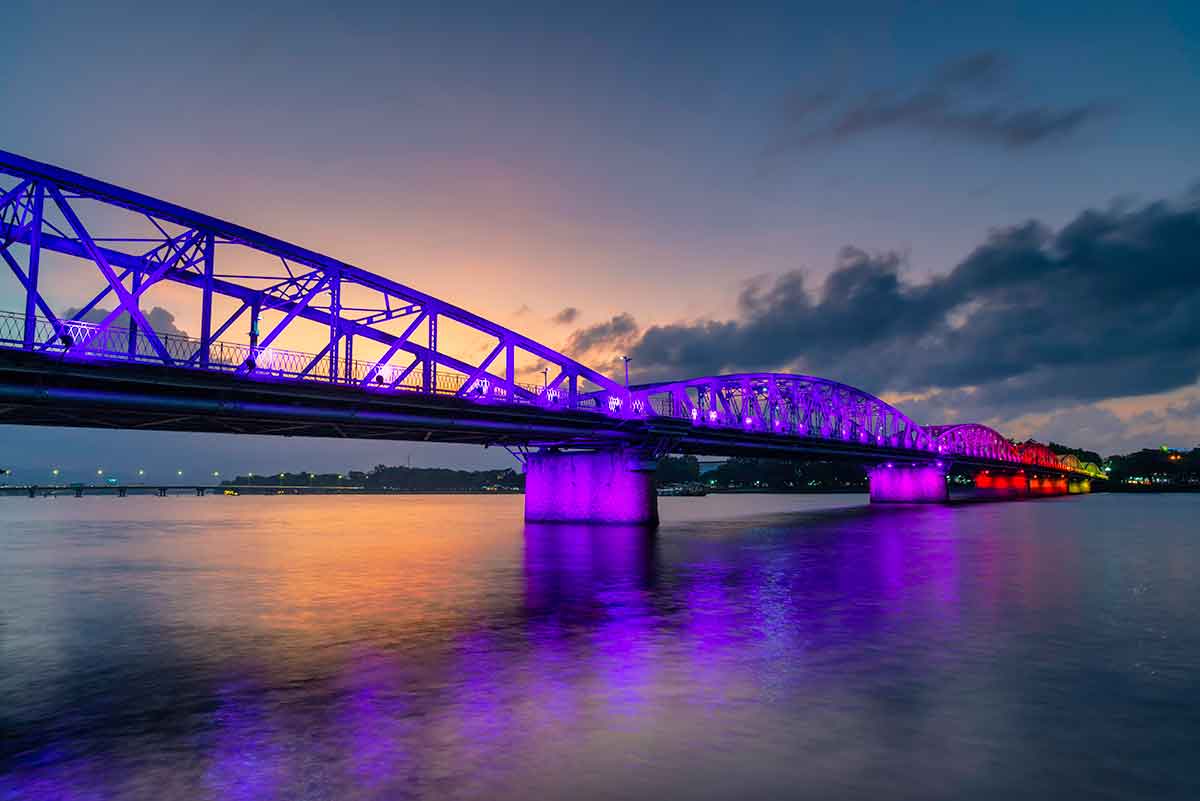
One of the most significant historic bridges in Hue is the Truong Tien Bridge, which spans the Perfume River and is one of the city’s most recognised landmarks.
Constructed by the French in 1899 and designed by Gustav Eiffel (who also designed the Eiffel Tower in Paris), it combines French architectural elegance with functional design, creating a beautiful and sturdy crossing that has stood the test of time.
The bridge is especially enchanting at night when it is illuminated, offering stunning reflections on the river’s surface.
Another notable bridge is the Phu Xuan Bridge, which also crosses the Perfume River.
This bridge connects the northern and southern parts of Hue, serving as a vital artery for the city’s transportation network.
Phu Xuan Bridge has a more modern design but still offers picturesque views of the river and surrounding landscapes.
The Thanh Toan Bridge is a smaller structure, known for its traditional wooden design and serene setting.
Located in a rural village, this Japanese-style covered bridge was built in the 18th century and has become a cherished symbol of the local community.
The bridge and its surroundings provide visitors with a glimpse into the tranquil beauty of Vietnamese countryside life.
12- Explore An Dinh Palace
Explore the former residence of Bao Dai, the last emperor of Vietnam.
An Dinh Palace is a stunning example of French colonial architecture and offers a fascinating look into Vietnam’s royal history.
As you step through the grand entrance, you’re greeted by elaborate European-style frescoes and stucco decorations adorning the walls and ceilings.
The main hall, an epitome of opulence, features intricately carved wooden furniture, ornate chandeliers, and a grand staircase that spirals gracefully upwards, evoking the grandeur of Vietnam’s regal past.
The private chambers of Emperor Bao Dai and his family are key highlights, furnished with luxurious pieces that reflect both comfort and royal elegance.
Each room tells a story through its décor, from richly embroidered curtains and gilded mirrors to finely crafted porcelain and artworks depicting scenes from Vietnamese history and mythology.
Don’t miss the expansive garden, which includes a beautiful fountain and meticulously landscaped grounds that provide a serene escape, echoing the palace’s former splendour.
The opulent dining room, with its long banquet table set with fine china and silverware, offers a glimpse into the lavish lifestyle of the last emperor of Vietnam.
An Dinh Palace is a time capsule that offers a vivid narrative of Vietnam’s royal legacy and its colonial influences.
13- Go Hiking At Bach Ma National Park
Hike through this beautiful national park known for its biodiversity.
Bach Ma National Park is a haven for nature lovers, offering trails that lead to breathtaking waterfalls, dense forests, and diverse wildlife.
Bach Ma National Park is 40 kilometers south of Hue, making it a convenient destination for a day trip.
The journey to the park typically takes around an hour by car, offering picturesque views of the countryside along the way.
One of the park’s standout attractions is the Five Lakes, a series of picturesque, cascading pools surrounded by lush, verdant foliage.
Each lake offers crystal-clear waters perfect for a refreshing swim, with tranquil spots for a peaceful picnic or a rest amidst nature.
Another highlight is Do Quyen Waterfall, a spectacular 300-meter-high cascade named after the vibrant rhododendron flowers that bloom around it.
The sight and sound of the waterfall are mesmerizing, and a nearby viewpoint provides breathtaking panoramic views of the surrounding landscape.
For an adventurous experience, the steep trail leading down to the base of the waterfall offers a rewarding challenge.
Bach Ma National Park is also home to Vong Hai Dai, or Sea-view Tower, which is perched on the park’s highest peak and offers unobstructed vistas of the East Sea and the surrounding coastline.
The forest is teeming with wildlife, including gibbons, deer and birds.
14- Wander Through The Hue Royal Antiquities Museum
Discover a collection of royal artifacts and relics at the Hue Royal Antiquities Museum, which provides insight into the opulent lifestyle of the Nguyen emperors and the rich cultural heritage of Vietnam.
Located in the Imperial City of Hue, the Hue Royal Antiquities Museum offers a fascinating glimpse into the majestic past of the Nguyen Dynasty.
Established in 1923, this museum houses a vast collection of royal artefacts, showcasing the exquisite artistry and cultural significance of Vietnam’s imperial era.
Among the treasures, you’ll find intricately crafted ceramics, delicate silk garments worn by emperors and empresses, and ceremonial weapons adorned with precious metals and stones.
The museum also features sections dedicated to traditional Vietnamese musical instruments and religious artifacts, further highlighting the diverse cultural landscape of the period.
The museum’s gardens are dotted with statues and lotus ponds, provide a peaceful backdrop for reflection and add to the overall experience of stepping back in time.
15- Discover The Tranquility Of Hue’s Traditional Garden Houses (Nha Vuon)
Visit these unique, historic homes with beautiful gardens. Hue’s traditional garden houses offer a tranquil escape and a chance to experience the architectural elegance of the region.
Traditional garden houses, or nha vuon, are an integral part of Hue’s cultural landscape, reflecting the region’s harmonious blend of nature and architecture.
These homes are characterised by their classic wooden structures, ornate carvings, and expansive gardens that are meticulously maintained.
Typically, nha vuon houses adhere to the principles of feng shui, ensuring that the layout promotes balance and positive energy.
The gardens often feature a variety of plants, from vibrant flowers to lush fruit trees, creating a serene and picturesque environment.
Pathways meander through these green spaces, leading to tranquil ponds adorned with lotus flowers and sometimes small rock formations or bonsai trees.
Traditional tea houses are set within the gardens, offering a perfect spot to relax and enjoy the peaceful surroundings.
16- Discover the Craft Villages in Hue
Exploring Hue’s traditional craft villages offers a unique window into the region’s rich artisanal heritage.
These villages, each specializing in different crafts, provide visitors with an opportunity to see traditional techniques passed down through generations and to appreciate the intricate workmanship involved in creating these timeless pieces.
Thanh Toan Village – Known for its tile-roofed bridge, Thanh Toan Village is a peaceful rural area where visitors can learn about traditional farming practices and the art of woven bamboo products. Skilled artisans craft everything from baskets to furniture, showcasing the versatility and beauty of bamboo.
Phu Cam Village – Phu Cam Village is famous for its elegant conical hats, or “nón lá.” These hats are quintessential symbols of Vietnamese culture, known for their simplicity and practicality. You can watch artisans meticulously stitching and shaping these hats, often adding intricate designs or poems in between the layers of palm leaves.
Thuy Xuan Incense Village – Thuy Xuan is renowned for its colorful, aromatic incense sticks. Visiting this village, you can witness the vibrant process of incense making, from dyeing the bamboo sticks to hand-rolling and drying the incense in the sun. The air is filled with the fragrant scent of sandalwood and cinnamon, creating an immersive sensory experience.
My Xuyen Wood Carving Village – My Xuyen Village is home to master wood carvers who create detailed sculptures, furniture, and religious artifacts. The intricate designs reflect the skill and creativity of the artisans, and visitors can observe the painstaking process of transforming raw wood into elaborately carved masterpieces.
Phuong Duc Bronze Casting Village – Bronze casting has a long tradition in Phuong Duc Village. Artisans here create a variety of items, from intricate statues to everyday objects like teapots. The village is especially known for producing bronze bells and gongs used in temples and pagodas throughout Vietnam.
17- Relax On Thuan An Beach
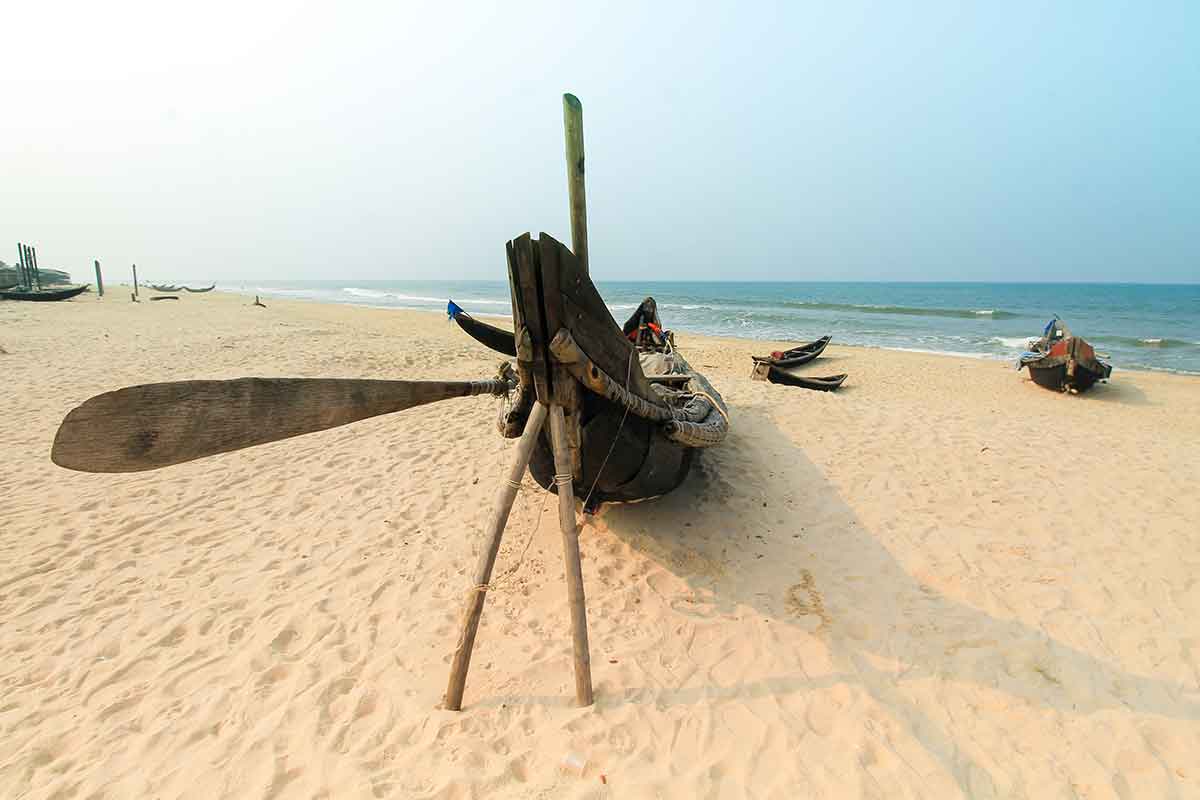
Relax on this sandy beach just outside the city. Thuan An Beach is the perfect spot to unwind, soak up the sun and enjoy the gentle waves of the South China Sea.
Thuan An Beach is about 15 kilometers northeast of Hue’s city center and an ideal destination for a quick getaway from the bustling city to a tranquil coastal environment.
The beach stretches for miles with golden sand and the azure waters of the South China Sea lapping against the shore.
18- Hue Night Market
Enjoy the vibrant atmosphere and street food at the night market.
Hue Night Market comes alive after dark, offering delicious local dishes, lively entertainment, and a bustling ambiance.
One of the main attractions of Hue Night Market is its mouth-watering street food, such as pho, banh mi, and bun bo Hue, a local spicy beef noodle soup.
You can also find fresh seafood, grilled skewers, and sweet treats like che, a Vietnamese dessert made from beans, fruit, and coconut milk.
This is a good place to pick up souvenirs, from intricate embroidery and hand-painted ceramics to traditional ao dai dresses and conical hats.
19- Enjoy The View From Vong Canh Hill
Vong Canh Hill is 7 kilometers southwest of Hue’s city center and easily accessible by car, motorbike and taxi.
You can even rent a bike and cycle there if you’re feeling energetic.
20- Admire The Architecture Of Phu Cam Cathedral
Visit this impressive Catholic church with unique architecture.
Phu Cam Cathedral is a striking blend of modern and traditional design, offering a peaceful sanctuary and a glimpse into Vietnam’s religious diversity.
Phu Cam Cathedral’s architecture is a fusion of contemporary and classic elements that reflect its historical significance and cultural importance.
Designed by the Vietnamese architect Ngo Viet Thu, the cathedral features soaring arches, delicate stained glass windows, and traditional Vietnamese motifs.
Constructed over several decades, the cathedral was finally completed in the 1960s.
Its interior is equally impressive with a lofty nave, intricately crafted altars, and beautiful frescoes that depict various biblical scenes.
For more things to do in Vietnam, read:
- 20 Things To Do In Ho Chi Minh City
- 15 Things To Do In Hanoi
- 15 Things To Do In Hoi An
- 20 Things To Do In Hue
- Vung Tau Travel Guide
- Vietnam River Cruise
- Hanoi vs Ho Chi Minh City
- 20 Beaches In Vietnam
- 20 Vietnam Cities
- Where To Stay In Hanoi
- Where To Stay In Ho Chi Minh City
- Where To Stay In Hoi An
- 20 Things To Do In Phu Quoc
- 20 Things To Do In Nha Trang
- 20 Islands In Vietnam
- 20 Things To Do In Danang
- 20 Things To Do In Dalat
- 20 Things To Do In Sapa
- Everything You Need To Know About Living In Vietnam
- 15 Things Vietnam Is Famous For
- 20 Beachfront Villas and Overwater Bungalows in Vietnam
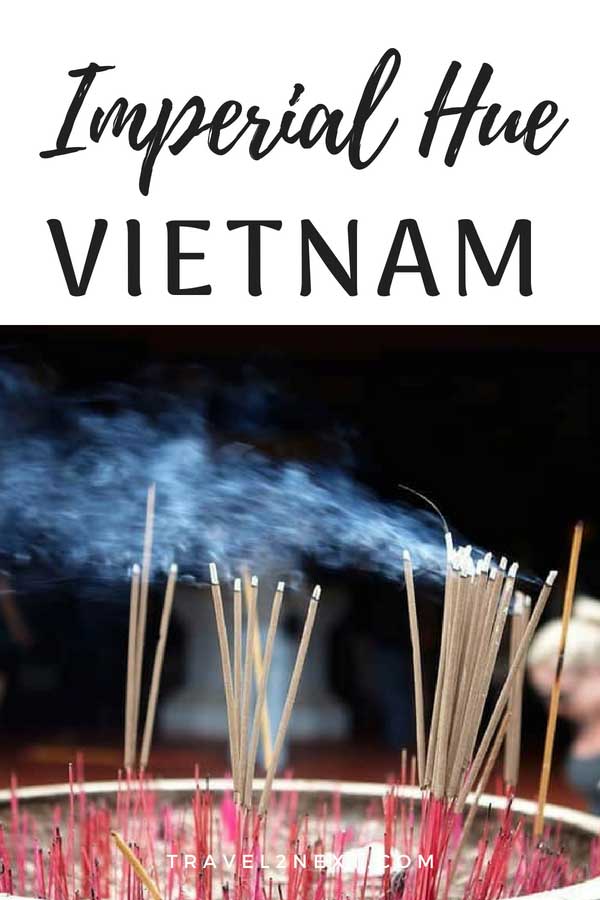
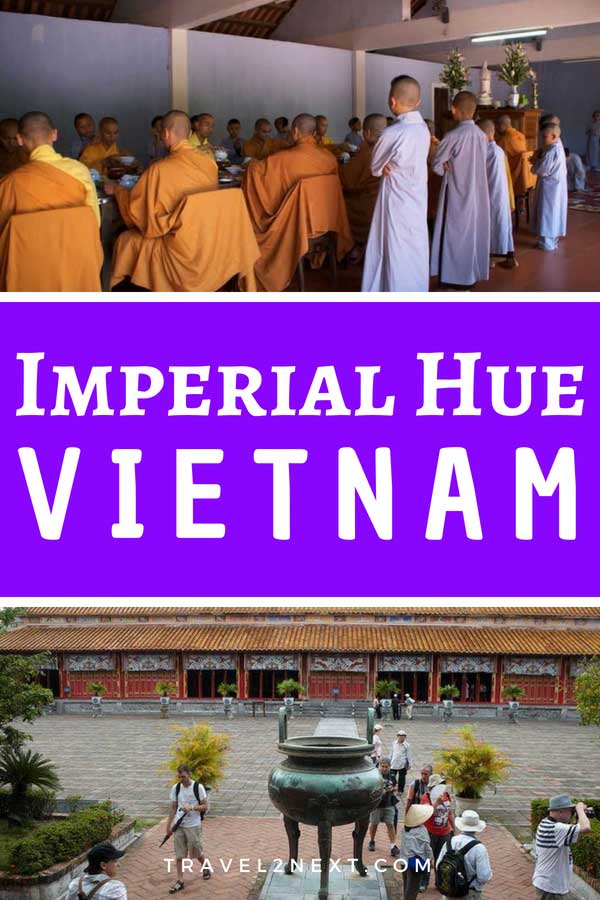
Plan Your Trip

Rent A Car – Find the best car rental rates at Discover Cars. They compare car hire companies to provide you with the best deal right now.

Find A Hotel – If you’re curious about this article and are looking for somewhere to stay, take a look at these amazing hotels.


